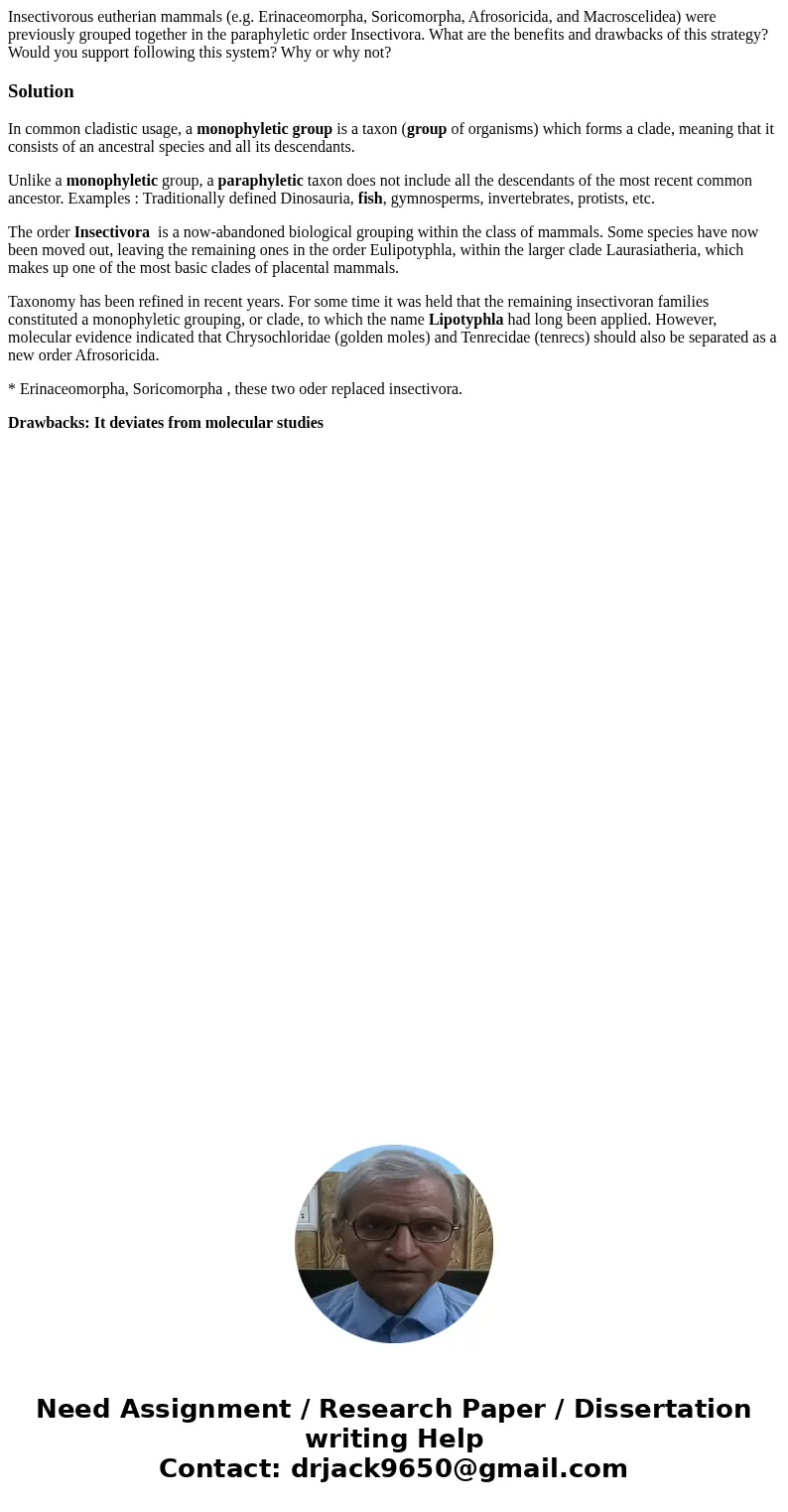Insectivorous eutherian mammals eg Erinaceomorpha Soricomorp
Insectivorous eutherian mammals (e.g. Erinaceomorpha, Soricomorpha, Afrosoricida, and Macroscelidea) were previously grouped together in the paraphyletic order Insectivora. What are the benefits and drawbacks of this strategy? Would you support following this system? Why or why not?
Solution
In common cladistic usage, a monophyletic group is a taxon (group of organisms) which forms a clade, meaning that it consists of an ancestral species and all its descendants.
Unlike a monophyletic group, a paraphyletic taxon does not include all the descendants of the most recent common ancestor. Examples : Traditionally defined Dinosauria, fish, gymnosperms, invertebrates, protists, etc.
The order Insectivora is a now-abandoned biological grouping within the class of mammals. Some species have now been moved out, leaving the remaining ones in the order Eulipotyphla, within the larger clade Laurasiatheria, which makes up one of the most basic clades of placental mammals.
Taxonomy has been refined in recent years. For some time it was held that the remaining insectivoran families constituted a monophyletic grouping, or clade, to which the name Lipotyphla had long been applied. However, molecular evidence indicated that Chrysochloridae (golden moles) and Tenrecidae (tenrecs) should also be separated as a new order Afrosoricida.
* Erinaceomorpha, Soricomorpha , these two oder replaced insectivora.
Drawbacks: It deviates from molecular studies

 Homework Sourse
Homework Sourse